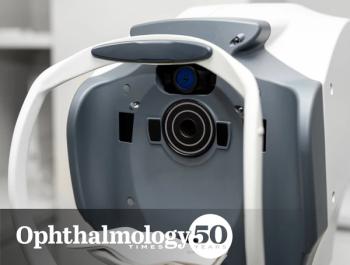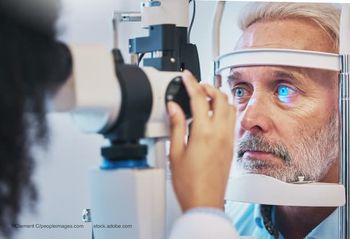
Micropulse laser may increase aqueous outflow
Studies have shown changes in outflow system structures mimic effects of pilocarpine
Micropulse laser effectively increased uveoscleral outflow in animal eyes. Researchers hope to determine if it is capable of acting as a surgical version of pilocarpine
Reviewed by Murray A. Johnstone, MD
Investigation into the effects of the micropulse laser suggests it may act in a manner that opens conventional and uveoscleral outflow channels. A laboratory study in monkey eyes documented changes in outflow system structures that mimic the effects of pilocarpine, an agent known to enhance pulsatile aqueous outflow.
“The motion depends on the meshwork being highly mobile,” he said. “The ciliary body is a big factor because it provides tension pulling the trabecular meshwork away from Schlemm’s canal external wall, thus allowing full excursions that permit it to function normally.”
Previous studies have shown that pulsatile aqueous outflow decreases and eventually stops as glaucoma worsens. Pilocarpine temporarily restores pulsatile flow, followed by a reduction in pressure during its brief duration of action. This raises the question about what exactly pilocarpine does that facilitates this effect.
“Studies of pulsatile flow have shown that pilocarpine has a rather profound effect on the pulsatile flow in glaucoma, and I wondered if the micropulse laser is capable of acting as a surgical version of pilocarpine,” Dr. Johnstone said.
Dr. Johnstone and his colleagues conducted a study to determine how the micropulse laser affects the sclera, ciliary body, and aqueous outflow pathways. A secondary goal was to see if the laser acts like pilocarpine. The investigators used real-time video, histology, and high-resolution
Dr. Johnstone explained that the laser energy was delivered through the sclera to the ciliary body just as it is clinically.
At the same time, there was inward and posterior movement of the ciliary body, and the trabecular meshwork mimicking the known effects of pilocarpine. The trabecular meshwork movement caused
Dr. Johnstone pointed out that connections linking the trabecular meshwork and hinged flaps at collector channel entrances were placed under tension. The stretched connecting bonds pulled on hinged collector channel flaps, which he reported, enlarged the collector channels themselves. When the outlines of the pre- and post-laser appearance were superimposed, differences were readily apparent.
The most reliable means of assessing effects on the outflow system was found to be the scleral spur. After analyzing a series of experiments, they found that the mean change in the position of the scleral spur was about 100 microns, a statistically significant difference.
RELATED:
Scleral-ciliary body interface shrinkage created a gap in the suprachoroidal space. The ciliary muscle effects were generally limited to the region of the longitudinal portion of the muscle. A lack of damage to the area of the pars plicata was a consistent finding with each of the modalities.
Dr. Johnstone noted that the round probe tip acts as a converging lens focused at the scleral-ciliary body interface that may partially explain the localization, and limited depth of penetration of the laser beam.
“The micropulse laser causes significant changes in the ciliary muscle configuration, similar to the effects of pilocarpine indicating that the procedure may be capable of enhancing conventional outflow,” Dr. Johnstone said. “Our findings of enlargement of the suprachoroidal space may increase aqueous flow through uveoscleral pathways.”
Dr. Johnstone did note that in the study, the effects of the procedure did not reach the region of the epithelium of the pars plicata, a primary source of aqueous secretion.
“Although inflammation and cytokine release may affect inflow, in our study, effects leading to enlargement of outflow pathways provide another way to explain intraocular pressure reduction,” he concluded.
RELATED:
Disclosures:
Murray Johnstone, MD
E: [email protected]
Dr. Johnstone has no financial interest in any aspect of this report.
Newsletter
Don’t miss out—get Ophthalmology Times updates on the latest clinical advancements and expert interviews, straight to your inbox.



















































.png)


